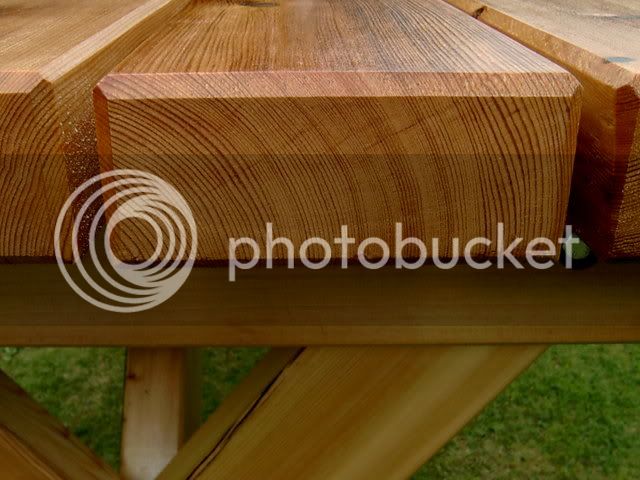You are using an out of date browser. It may not display this or other websites correctly.
You should upgrade or use an alternative browser.
You should upgrade or use an alternative browser.
Pitch pine.
- Thread starter Rich
- Start date

Help Support UKworkshop.co.uk:
This site may earn a commission from merchant affiliate
links, including eBay, Amazon, and others.
MatthewKing
Established Member
Came across this if it helps:
http://en.wikipedia.org/wiki/Pitch_pine
http://en.wikipedia.org/wiki/Pitch_pine
Umm......I think that article is referring to something very different to what we know as Pitch Pine as reclaimed from Mills and Warehouses in this country.
I've seen many beams of at least 7" x 5" section in 12' lengths in very straight grain, without a knot in sight over the entire length.
As for why it is called PP....maybe because every so often you come across pockets of pitch? Also there seem to be at least 2 distinct varieties available ex mills - one is the tight grained orange/brown stuff I mentioned, the other is an equally heavy but much harder, wider grained wood - the smell is the same, but it gums up everything with resin and also has huge live knots.
Chris.
I've seen many beams of at least 7" x 5" section in 12' lengths in very straight grain, without a knot in sight over the entire length.
As for why it is called PP....maybe because every so often you come across pockets of pitch? Also there seem to be at least 2 distinct varieties available ex mills - one is the tight grained orange/brown stuff I mentioned, the other is an equally heavy but much harder, wider grained wood - the smell is the same, but it gums up everything with resin and also has huge live knots.
Chris.
maltrout512
Established Member
I've always been led to believe that it was quite knotty and high in resin content. Quite a few church pews were made with pitch pine. That's only my opinion.
Scrums":1en2jm9y said:I've seen many beams of at least 7" x 5" section in 12' lengths in very straight grain, without a knot in sight over the entire length.Chris.
I salvaged quite a few beams from old mills myself and I found the straight grained and knot-free beams were Oregon and the knotty/smelly/resinous beams were pitch/Scots pine. Just a thought.
motownmartin
Established Member
I bought some reclaimed Pine and it was described as Pitch Pine.
When I cleaned it up on the planer it looked good with tight growth rings and few knots
Like so:-


When I cleaned it up on the planer it looked good with tight growth rings and few knots
Like so:-


lathepilot
Member
Rich,
I used to work in a former Methodist church/sunday school. All the joinery had been pitch pine so there were planks from pews etc and BIG mouldings all over the place- the owner bought it intact and stripped the place out.
Spot-on maltrout512!
Pics from Motownmartin look about right though it can be more orangey. Looks great with those crisp chamfers on.
Can be dry, even a bit brittle for the most part then you'll hit a big sticky knot. Coats tools nicely with resin and splinters can get 'orribly infected. 8)
I remember the smell being sort-of sharp and medicinal. Quite distinctive.
I think pitch-tar can be recovered from it for shipbuilding etc as mentioned on wiki, but you need to know how to burn it- reduced oxygen/in a box I think- the tar runs out of the bottom into a cup. Traditionally done in Scandinavia- no surprise there eh?
Most pine will yield some pitch but this is an especially good source- hence the name.
I hope this helps.
Thom.
I used to work in a former Methodist church/sunday school. All the joinery had been pitch pine so there were planks from pews etc and BIG mouldings all over the place- the owner bought it intact and stripped the place out.
Spot-on maltrout512!
Pics from Motownmartin look about right though it can be more orangey. Looks great with those crisp chamfers on.
Can be dry, even a bit brittle for the most part then you'll hit a big sticky knot. Coats tools nicely with resin and splinters can get 'orribly infected. 8)
I remember the smell being sort-of sharp and medicinal. Quite distinctive.
I think pitch-tar can be recovered from it for shipbuilding etc as mentioned on wiki, but you need to know how to burn it- reduced oxygen/in a box I think- the tar runs out of the bottom into a cup. Traditionally done in Scandinavia- no surprise there eh?
Most pine will yield some pitch but this is an especially good source- hence the name.
I hope this helps.
Thom.



